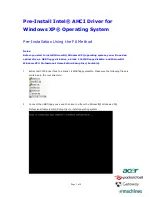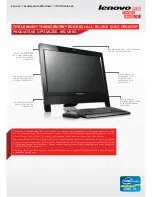
TIP:
The
vgchange
,
lvmerge
, and
lvextend
commands support the
–s
option to suppress
the automatic synchronization of stale extents. If you are performing multiple mirror-related tasks,
you can suppress the extent synchronization until you have finished all the tasks, then run
lvsync
with
–T
to synchronize all the mirrored volumes in parallel. For example, you can use
vgchange
-s
with
lvsync -T
to reduce the activation time for volume groups with mirrored logical volumes.
For another example, see
“Mirroring the Boot Disk” (page 90)
.
Increasing Disk Redundancy Through Disk Sparing
NOTE:
Version 2.x volume groups do not support disk sparing.
Disk sparing requires the optional product HP MirrorDisk/UX.
MirrorDisk/UX is not available for shared LVM environments within a high availability cluster across
more than two nodes. You cannot configure sparing within these environments. In such cases, HP
recommends that you use hardware mirroring through RAID devices, which can support their own
form of sparing.
If a disk containing mirrored data fails, replace the disk as soon as possible, as described in
“Disk
Troubleshooting and Recovery Procedures” (page 116)
. Before you replace the disk, the data in
your logical volume does not have an extra mirrored copy unless you have set up more than one
mirror copy. Even with multi–way mirroring, your level of security is reduced because of the loss
of one mirror copy.
To prevent this possibility, you can use one or more spare disks within each of your volume groups
to serve as substitute devices in the event of disk failure. With this configuration, LVM automatically
reconfigures the volume group so that the spare physical volume takes the place of a failed device
without any intervention required. That is, a copy of the data from all the logical volumes currently
on the failed disk is created on the substitute physical volume. This process is referred to as automatic
sparing, or
sparing
. Sparing occurs while the logical volume remains available to users. You can
then schedule the replacement of the failed disk at a time of minimal inconvenience to you and
your users. At that time, you copy the data from the spare disk back to the original disk or its
replacement and return the spare disk to its role as a standby empty disk.
For sparing to occur, the following conditions must be met:
•
All logical volumes in the volume group must have been configured with strict mirroring so
that mirrored copies are maintained on separate disks because LVM copies the data onto the
spare from an undamaged disk rather than from the defective disk itself.
•
At least one physical volume must be available as a standby spare; if your last spare is already
in use as a result of a prior disk failure, it cannot serve as a currently available spare.
•
The available spare must be at least as large as the failed disk.
The spare physical volume disk space is not available for extent allocation for any other purpose
than in the event of serving as a substitute disk in the event of disk failure. Therefore, its physical
extents are not included in the counts shown under
total PE
or
free PE
in the output of the
pvdisplay
and
vgdisplay
commands.
NOTE:
If it is important to maintain comparable performance in the event of disk failure, configure
a spare physical volume to each bus. However, if more than one disk on the same bus fails, even
with this strategy, performance will be impacted.
The
pvdisplay
and
vgdisplay
commands provide information on whether a given physical
volume is an empty standby spare or currently holding data as a spare in use, along with information
on any physical volume that is currently unavailable but had data spared.
Planning for Availability
27
















































